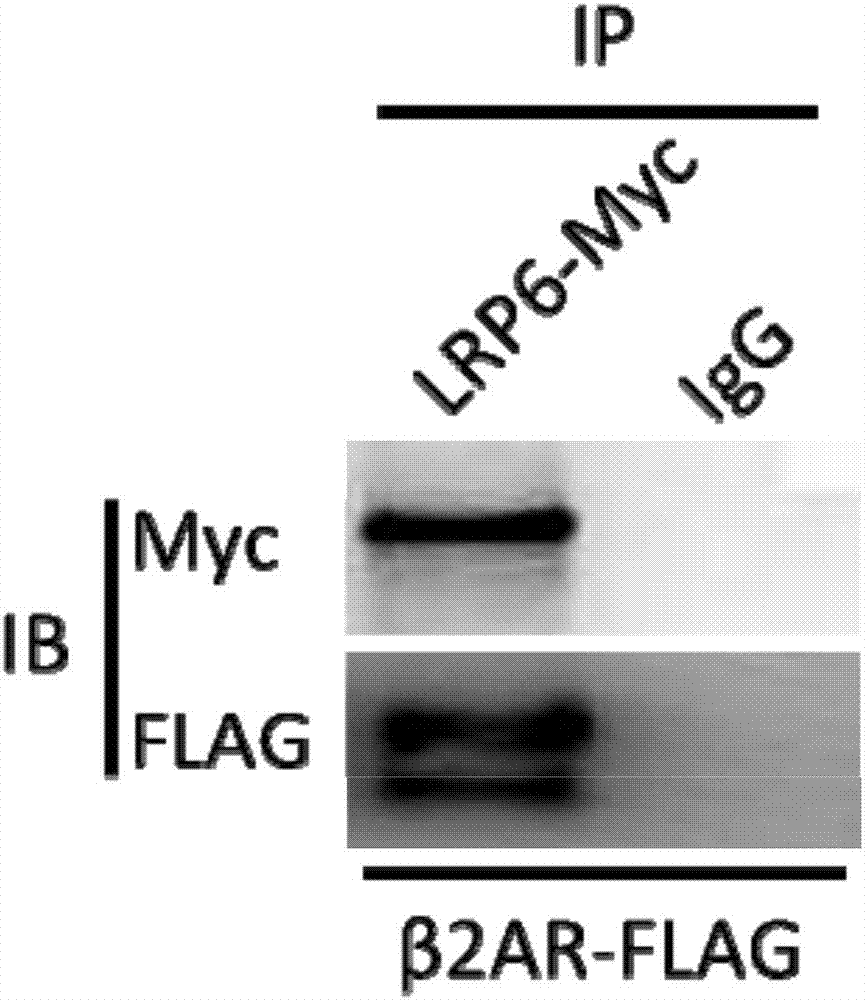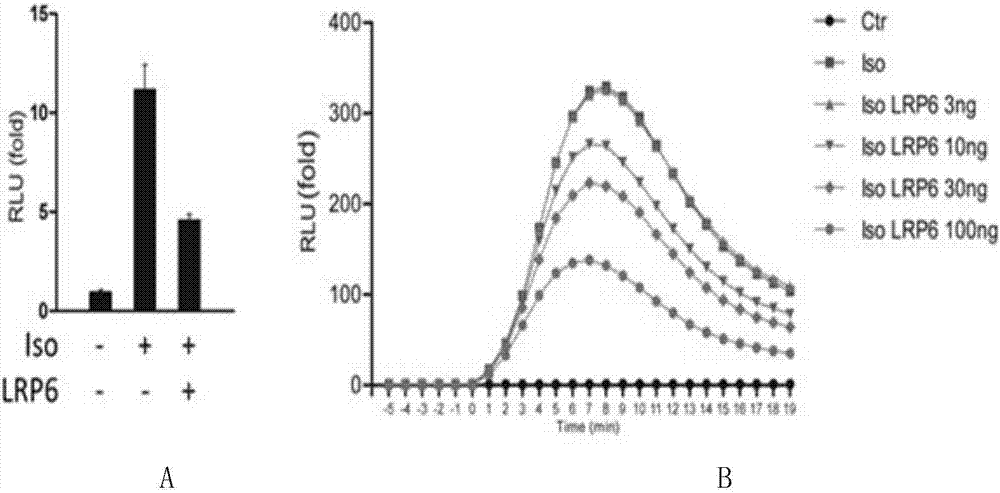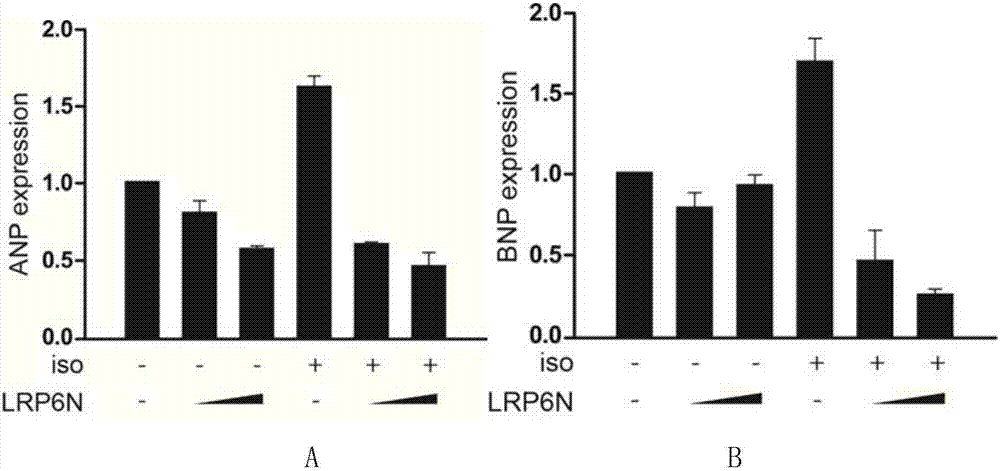Drug for treating heart failure and protecting cardiac functionality
A heart function and drug technology, applied in the field of biomedicine, can solve problems such as heart failure and severe heart failure, and achieve remarkable effects of heart function protection and technological progress
- Summary
- Abstract
- Description
- Claims
- Application Information
AI Technical Summary
Problems solved by technology
Method used
Image
Examples
Embodiment 1
[0024] There are more than 800 members of the GPCRs family. When the GPCR receptor recognizes and binds to the corresponding ligand, it will induce a conformational change, and mainly activate the Gα subunit subfamily (composed of Gαs, Gαi, Gαq, and Gα12 / 13) in the Gαβγ heterotrimer, so that the extracellular The signal is converted into an intracellular signal. Both LRP5 and LRP6 receptors belong to the low-density lipoprotein receptor family, both of which are very similar in structure and function and participate in the activation of Wnt signaling pathway. Therefore two receptors are usually studied together (ie LRP5 / 6). In order to verify the functional impact of LRP5 / 6 receptors on GPCR receptors, the present invention first selects a representative GPCR receptor that plays an important role in heart function: β-adrenoceptor (βAR). The results of co-immunoprecipitation showed that LRP6 receptor and βAR receptor can exist in the same protein complex ( figure 1 ).
[00...
Embodiment 2
[0027] In the in vitro cell experiment, AD-293 cells were co-transfected with LRP6 plasmid and βAR receptor plasmid, and the effect of LRP6 on the activity of downstream signaling pathway of βAR receptor was detected. Luciferase dual-reporter analysis revealed that CRE-luciferase ( c AMP r esponse e lement) as a detection indicator, LRP6 can inhibit the CRE response activated by Iso-βAR ( figure 2 A). Kinetic analysis of cAMP showed that gradient overexpression of LRP6 receptor could dose-dependently inhibit intracellular transient cAMP production mediated by Iso-βAR ( figure 2 B).
[0028] In order to further verify the effect of LRP5 / 6 receptors on the expression of GPCR receptors, siRNA technology was used to knock out LRP5 / 6 in cardiac cardiomyocytes in vitro, and the results showed that the mRNA expression levels of many GPCRs were affected.
Embodiment 3
[0030] Since the binding site of LRP6 and βARs is in the extracellular domain of LRP6, the extracellular domain of LRP6 consists of four β-helix / epidermal growth factor (EGF) repeats (named E1, E2, E3, E4 domains) and three LDL repeats (named LDLR domains). A plasmid expressing the extracellular domain of secreted human LRP6 was constructed and the protein (LRP6N) was purified by querying its nucleic acid sequence from the UniProt database.
[0031] The whole experimental process is as follows: design primers containing BamHI restriction site, capture humanLRP6 extracellular fragment (1-1370AA) (gene nucleic acid sequence as shown in SEQ ID NO.1) cDNA by PCR method, BamHI restriction PCR The product and the linearized pcDNA3.1-6myc vector were purified and ligated with T4 ligase, transformed, coated with resistance plates, single clones were selected, and the insertion direction was verified by PCR and sequenced.
[0032] The constructed plasmid was used to construct hLRP6N-6...
PUM
 Login to view more
Login to view more Abstract
Description
Claims
Application Information
 Login to view more
Login to view more - R&D Engineer
- R&D Manager
- IP Professional
- Industry Leading Data Capabilities
- Powerful AI technology
- Patent DNA Extraction
Browse by: Latest US Patents, China's latest patents, Technical Efficacy Thesaurus, Application Domain, Technology Topic.
© 2024 PatSnap. All rights reserved.Legal|Privacy policy|Modern Slavery Act Transparency Statement|Sitemap



